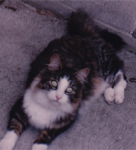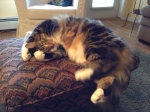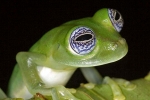Five years of lessons - CPAP and oral appliance
-
OntarioKevin
- Posts: 79
- Joined: Thu Jan 06, 2011 6:27 am
- Location: Toronto
Five years of lessons - CPAP and oral appliance
It's been about five years (OK, maybe ten) since I started CPAP, and at this point I MOSTLY know what works and wanted to share it with people starting out.
First, normal sleep hygiene matters. If you've been living with OSA, you likely already have figured out how to block out extraneous noises, lights, etc. I use ear plugs and a blindfold, as well blackout curtains. Likely you were really waking up from the OSA and tried other stuff before tackling the root problem, but that other stuff can still wake you up and if you're lucky enough to have the CPAP worked out you don't want to wake up from some silly barking dog or honking car.
Also under normal sleep hygiene are things like not ingesting stimulants (coffee, tea, chocolate) before bedtime. This affects different people differently, but by now you likely know how your body reacts. Alcohol cuts both ways - it turns out mostly it's just what your body is used to. If you regularly have a glass or two of wine or beer around dinner, you might actually sleep BETTER continuing to do so. I do. But essentially any alcohol after about 9pm is going to screw with your sleep.
Marijuana also cuts both ways. I don't have as much experience with it, but for me, a small amount a few hours before bed once a month or so can be beneficial. I know others that swear by it - best to check other boards I suppose. Not condoning drug use here (it's more accepted in Canada), but if you're really struggling with OSA you've likely tried just about anything anyway.
On the subject of drugs - they work. For one night. Then they suck. Before tackling CPAP, you likely tried the full roster as I did. For me, having Ambien around, cut into quarters, can be helpful. There are still those 3am nights when I don't see any better options. But in general, the sleeping drugs rebound the next night or two and your sleep is worse than before. And even when you're "awake" the next day, you're not really all there.
By far the most important part of "sleep hygiene" is just getting your head straight - relaxing about work, relationships, life. Obviously this is often more easily said than done. For me, I have a few customers whose emails go straight to an Outlook folder so I don't look at them before bed, and 100% I find sex to be relaxing, in part because it just makes my relationship with my wife feel more comfortable and less tense. You'll know your own life best, but once I found out that Ativan was my best sleep medicine, I realized that stress was half my problem. Obviously more benefits to reducing stress than just sleep, but it's a biggie.
Another obvious thing is weight. I'm up about 10 pounds from when I started, and I've had to increase my CPAP pressure by 2 or 3. Weight matters. Exercise is also obviously beneficial, but won't cut the root problem. Before CPAP, I was running 10K a day just to be able to sleep, and I essentially permanently damaged my knees.
Now on to sleep therapies.
Short answer: as much as CPAP sucks, there's nothing better. I used an oral device (Somnodent) for about two years - custom made by a dentist for like $2000. Really painful to get used to, but once you do it can allow you great sleep - IF used ALONG with CPAP. I was never able to sleep with just the oral device. But it allowed me to reduce the CPAP pressure significantly, which reduces leaks and makes everything more comfortable.
BUT... after two years, I couldn't properly close my jaw. In fact it's been two months since I finally stopped using the oral device and I'm only now able to properly close my mouth. I had stopped being social because my mouth was a constant stream of spit while I talked, which is what finally did it for me. My jaws still "crack" back into place. Compared with more radical approaches like breaking and resetting your jaw, an oral device is a dream. But for me - I wish I'd never started, because I still had to use CPAP.
Now for CPAP...
For me, I've found the Resmed stuff to be the best. It completely sucks that they jack the prices up for Canada and you can't buy it on CPAP.com, but it is what it is. It does help enormously that I'm fortunate enough to not really have to rely on insurance, so I have an attic full of stuff that I've tried over the years (I literally consider sleep the most important investment in my health). Right now the Resmed S10 is in my bedroom, and I have three other S9's in various places ready to go - although damn if I don't unplug and carry around that S10 when I move around; it's just smoother and quieter. I use one of those HoseBuddies over my head - travel with it as well. In fact, regarding travel, the only thing I ever got flagged on in carry-on was the HoseBuddy (they thought I could beat the pilot with it).
There are, at core, four things that are critical to your success with CPAP:
1) Find a mask that works for you. I use the Resmed Liberty Hybrid (covers the mouth and shoves "pillows" into your nostrils) because the other full-face masks leak into my eyes. It's massively better if you breathe thru your nose to use the nasal-only ones (fewer points of failure for leaks), but I just can't breathe thru my nose no matter how I've tried. Had it drilled out (for supposed septum deviations), clear it out all the time w nasal rinse, but I've just never been a nose breather. Some people have success with taping their mouths or using a headstrap - I imagine this would work if you were used to breathing thru your nose during the day but just have your mouth drop open at night. If you have access to funds, trying out different masks is probably the best investment you can make - they matter more than the machine, and they're cheaper to try.
2) Learn to clean your mask. The CPAP companies provide no instructions for this because they have no interest in having you clean your mask - then you won't buy a new one. But various people on this board have mentioned boiling with baking soda, and it's been a life saver for me. First you have to get comfortable completely disassembling and reassembling your mask, which took me about a year. The cleaning process is simple: boil a pot of water (distilled is great, but even filtered with a Brita is fine) with about two tablespoons of baking soda in it. Toss in the silicon parts of your mask (NOT the hard plastic parts) for about 10-15 minutes (five isn't enough). Second - and this is important - rinse in a second pot of boiling DISTILLED water if at all possible. If you use tap water, there'll be all kinds of residue. I now have a basket of 4-5 masks and nasal pillows, and just use them for a couple of nights before switching. Then boil the whole bunch of them after a week or two. This has saved me hundreds - I was buying new masks and pillows every few months.
3) Shave your face at least every couple of days for a better seal, and if you use a nasal pillow of any sort, rub Vaseline in your nostrils every morning so you're not rubbing your nose like a coke addict all day. Some people also find Lanolin useful for "toughening" your nostrils (the stuff breastfeeding mothers use), but that did nothing for me.
4) Get to the therapist settings on your CPAP machine, and play with them. The folks at the various CPAP clinics don't have OSA, and candidly have essentially no idea what they're talking about. You have to understand each setting, and try various versions of it. In addition to the core pressure setting (I use 12.3), understand the humidifier (I don't use it because it creates too much water in my mask), and the EPR setting (just the difference between pressure when you breathe in and breathe out). I know you're sleep-deprived; but do online research on the settings for your machine. The ones they provide to the patient assume you're an imbecile and shouldn't be touching anything on the machine.
Hopefully this will help someone - if not now, then over the next few years as people join this board and search for help. CPAPTalk has been a lifeline - much, much more useful than anything any doctor or therapist ever told me over the years. CPAP is the kind of thing you just don't know about until you've wrestled with it for a few years.
First, normal sleep hygiene matters. If you've been living with OSA, you likely already have figured out how to block out extraneous noises, lights, etc. I use ear plugs and a blindfold, as well blackout curtains. Likely you were really waking up from the OSA and tried other stuff before tackling the root problem, but that other stuff can still wake you up and if you're lucky enough to have the CPAP worked out you don't want to wake up from some silly barking dog or honking car.
Also under normal sleep hygiene are things like not ingesting stimulants (coffee, tea, chocolate) before bedtime. This affects different people differently, but by now you likely know how your body reacts. Alcohol cuts both ways - it turns out mostly it's just what your body is used to. If you regularly have a glass or two of wine or beer around dinner, you might actually sleep BETTER continuing to do so. I do. But essentially any alcohol after about 9pm is going to screw with your sleep.
Marijuana also cuts both ways. I don't have as much experience with it, but for me, a small amount a few hours before bed once a month or so can be beneficial. I know others that swear by it - best to check other boards I suppose. Not condoning drug use here (it's more accepted in Canada), but if you're really struggling with OSA you've likely tried just about anything anyway.
On the subject of drugs - they work. For one night. Then they suck. Before tackling CPAP, you likely tried the full roster as I did. For me, having Ambien around, cut into quarters, can be helpful. There are still those 3am nights when I don't see any better options. But in general, the sleeping drugs rebound the next night or two and your sleep is worse than before. And even when you're "awake" the next day, you're not really all there.
By far the most important part of "sleep hygiene" is just getting your head straight - relaxing about work, relationships, life. Obviously this is often more easily said than done. For me, I have a few customers whose emails go straight to an Outlook folder so I don't look at them before bed, and 100% I find sex to be relaxing, in part because it just makes my relationship with my wife feel more comfortable and less tense. You'll know your own life best, but once I found out that Ativan was my best sleep medicine, I realized that stress was half my problem. Obviously more benefits to reducing stress than just sleep, but it's a biggie.
Another obvious thing is weight. I'm up about 10 pounds from when I started, and I've had to increase my CPAP pressure by 2 or 3. Weight matters. Exercise is also obviously beneficial, but won't cut the root problem. Before CPAP, I was running 10K a day just to be able to sleep, and I essentially permanently damaged my knees.
Now on to sleep therapies.
Short answer: as much as CPAP sucks, there's nothing better. I used an oral device (Somnodent) for about two years - custom made by a dentist for like $2000. Really painful to get used to, but once you do it can allow you great sleep - IF used ALONG with CPAP. I was never able to sleep with just the oral device. But it allowed me to reduce the CPAP pressure significantly, which reduces leaks and makes everything more comfortable.
BUT... after two years, I couldn't properly close my jaw. In fact it's been two months since I finally stopped using the oral device and I'm only now able to properly close my mouth. I had stopped being social because my mouth was a constant stream of spit while I talked, which is what finally did it for me. My jaws still "crack" back into place. Compared with more radical approaches like breaking and resetting your jaw, an oral device is a dream. But for me - I wish I'd never started, because I still had to use CPAP.
Now for CPAP...
For me, I've found the Resmed stuff to be the best. It completely sucks that they jack the prices up for Canada and you can't buy it on CPAP.com, but it is what it is. It does help enormously that I'm fortunate enough to not really have to rely on insurance, so I have an attic full of stuff that I've tried over the years (I literally consider sleep the most important investment in my health). Right now the Resmed S10 is in my bedroom, and I have three other S9's in various places ready to go - although damn if I don't unplug and carry around that S10 when I move around; it's just smoother and quieter. I use one of those HoseBuddies over my head - travel with it as well. In fact, regarding travel, the only thing I ever got flagged on in carry-on was the HoseBuddy (they thought I could beat the pilot with it).
There are, at core, four things that are critical to your success with CPAP:
1) Find a mask that works for you. I use the Resmed Liberty Hybrid (covers the mouth and shoves "pillows" into your nostrils) because the other full-face masks leak into my eyes. It's massively better if you breathe thru your nose to use the nasal-only ones (fewer points of failure for leaks), but I just can't breathe thru my nose no matter how I've tried. Had it drilled out (for supposed septum deviations), clear it out all the time w nasal rinse, but I've just never been a nose breather. Some people have success with taping their mouths or using a headstrap - I imagine this would work if you were used to breathing thru your nose during the day but just have your mouth drop open at night. If you have access to funds, trying out different masks is probably the best investment you can make - they matter more than the machine, and they're cheaper to try.
2) Learn to clean your mask. The CPAP companies provide no instructions for this because they have no interest in having you clean your mask - then you won't buy a new one. But various people on this board have mentioned boiling with baking soda, and it's been a life saver for me. First you have to get comfortable completely disassembling and reassembling your mask, which took me about a year. The cleaning process is simple: boil a pot of water (distilled is great, but even filtered with a Brita is fine) with about two tablespoons of baking soda in it. Toss in the silicon parts of your mask (NOT the hard plastic parts) for about 10-15 minutes (five isn't enough). Second - and this is important - rinse in a second pot of boiling DISTILLED water if at all possible. If you use tap water, there'll be all kinds of residue. I now have a basket of 4-5 masks and nasal pillows, and just use them for a couple of nights before switching. Then boil the whole bunch of them after a week or two. This has saved me hundreds - I was buying new masks and pillows every few months.
3) Shave your face at least every couple of days for a better seal, and if you use a nasal pillow of any sort, rub Vaseline in your nostrils every morning so you're not rubbing your nose like a coke addict all day. Some people also find Lanolin useful for "toughening" your nostrils (the stuff breastfeeding mothers use), but that did nothing for me.
4) Get to the therapist settings on your CPAP machine, and play with them. The folks at the various CPAP clinics don't have OSA, and candidly have essentially no idea what they're talking about. You have to understand each setting, and try various versions of it. In addition to the core pressure setting (I use 12.3), understand the humidifier (I don't use it because it creates too much water in my mask), and the EPR setting (just the difference between pressure when you breathe in and breathe out). I know you're sleep-deprived; but do online research on the settings for your machine. The ones they provide to the patient assume you're an imbecile and shouldn't be touching anything on the machine.
Hopefully this will help someone - if not now, then over the next few years as people join this board and search for help. CPAPTalk has been a lifeline - much, much more useful than anything any doctor or therapist ever told me over the years. CPAP is the kind of thing you just don't know about until you've wrestled with it for a few years.
Re: Five years of lessons - CPAP and oral appliance
Hi, I want to caution newbies not to confuse insomnia (which apparently the poster's had) with apnea. He's given lessons (blackout curtains, no coffee, etc) re dealing with insomnia that don't apply to OSA on its own, and only incidentally would apply to someone else who has trouble falling or staying asleep with or without apnea... two separate issues, if sometimes found together.
And he advocates Vaseline in nostrils (lower down on the pg) but says he uses nasal pillows - I can only think he has great insurance, because Vaseline is strictly 'forbidden' when it comes to contact with silicon (nasal pillows are made of silicone I believe, unless they're not - don't use them myself) as Vaseline rots silicone over time. Most of us use Lansinoh when necessary.
And he advocates Vaseline in nostrils (lower down on the pg) but says he uses nasal pillows - I can only think he has great insurance, because Vaseline is strictly 'forbidden' when it comes to contact with silicon (nasal pillows are made of silicone I believe, unless they're not - don't use them myself) as Vaseline rots silicone over time. Most of us use Lansinoh when necessary.
Re: Five years of lessons - CPAP and oral appliance
He also said he didn't have to rely on insurance and only used the Vaseline in the morning so that should not bother the nasal pillows?
_________________
| Mask: Swift™ FX Nasal Pillow CPAP Mask with Headgear |
| Humidifier: S9™ Series H5i™ Heated Humidifier with Climate Control |
Re: Five years of lessons - CPAP and oral appliance
Oh, good point - I hadn't registered that part! But I'm not sure what point you were making about his not needing insurance... I'm also in Canada FWIW.
Re: Five years of lessons - CPAP and oral appliance
Thank you for your comprehensive post Kevin.
Re: Five years of lessons - CPAP and oral appliance
It seems as if the price of everything is jacked up in Canada. I'd sure like to know where all that money is going.OntarioKevin wrote:
For me, I've found the Resmed stuff to be the best. It completely sucks that they jack the prices up for Canada and you can't buy it on CPAP.com, but it is what it is.
OntarioKevin wrote: In fact, regarding travel, the only thing I ever got flagged on in carry-on was the HoseBuddy (they thought I could beat the pilot with it).
I might give this a try. I have silicone muffin pans so I know silicone can withstand heat.OntarioKevin wrote:
2) Learn to clean your mask. The CPAP companies provide no instructions for this because they have no interest in having you clean your mask - then you won't buy a new one. But various people on this board have mentioned boiling with baking soda, and it's been a life saver for me. First you have to get comfortable completely disassembling and reassembling your mask, which took me about a year. The cleaning process is simple: boil a pot of water (distilled is great, but even filtered with a Brita is fine) with about two tablespoons of baking soda in it. Toss in the silicon parts of your mask (NOT the hard plastic parts) for about 10-15 minutes (five isn't enough). Second - and this is important - rinse in a second pot of boiling DISTILLED water if at all possible. If you use tap water, there'll be all kinds of residue. I now have a basket of 4-5 masks and nasal pillows, and just use them for a couple of nights before switching. Then boil the whole bunch of them after a week or two. This has saved me hundreds - I was buying new masks and pillows every few months.
-
OntarioKevin
- Posts: 79
- Joined: Thu Jan 06, 2011 6:27 am
- Location: Toronto
Re: Five years of lessons - CPAP and oral appliance
Hey - sorry I haven't checked in. Of COURSE - had about two weeks of unbelievably bad sleep following the week or so of good sleep prior to writing this.
Re: Vaseline, I just use it in the morning so that my nose isn't itchy all day. I'm sure there's some left by the time I go to sleep and use the nasal pillows again, but whatever.
In the end the nasal pillows are the cheapest part of the setup, so if that rots 'em faster I can live with it.
Just boiling all my silicone bits as I write...
Takes about half an hour every few weeks. I have like a dozen of the assemblies (mask and nasal), so I've been just doing 'em in batches. Only issue is that it's A BIT addictive having squeaky-clean masks, so I'm tending to use a fresh one more often than I used to.
And yeah - OSA is different from insomnia. But for the first decade or so that I had OSA, I hadn't yet discovered/embraced CPAP. All I really knew is that I snored loudly and woke up a lot. So my advice for those starting out remains: cover all the bases. What you don't want is to be finally enjoying a blessed night's sleep and get woken up by a text message or dog barking.
Re: Vaseline, I just use it in the morning so that my nose isn't itchy all day. I'm sure there's some left by the time I go to sleep and use the nasal pillows again, but whatever.
In the end the nasal pillows are the cheapest part of the setup, so if that rots 'em faster I can live with it.
Just boiling all my silicone bits as I write...
Takes about half an hour every few weeks. I have like a dozen of the assemblies (mask and nasal), so I've been just doing 'em in batches. Only issue is that it's A BIT addictive having squeaky-clean masks, so I'm tending to use a fresh one more often than I used to.
And yeah - OSA is different from insomnia. But for the first decade or so that I had OSA, I hadn't yet discovered/embraced CPAP. All I really knew is that I snored loudly and woke up a lot. So my advice for those starting out remains: cover all the bases. What you don't want is to be finally enjoying a blessed night's sleep and get woken up by a text message or dog barking.
Re: Five years of lessons - CPAP and oral appliance
Thank you for the comprehensive post!
I am about a year into my cpap treatment and discovered many of these tips through trial and error, so it is an excellent resource for new users.
And I want to 2nd the ear plugs and eye mask / black out curtain suggestion. I have only recently discovered a correlation with those items and lower AHI, especially when I am trying to sleep in past dawn. Plus my wife snores and likes to sleep with the television on low volume.
I am about a year into my cpap treatment and discovered many of these tips through trial and error, so it is an excellent resource for new users.
And I want to 2nd the ear plugs and eye mask / black out curtain suggestion. I have only recently discovered a correlation with those items and lower AHI, especially when I am trying to sleep in past dawn. Plus my wife snores and likes to sleep with the television on low volume.
- chunkyfrog
- Posts: 34544
- Joined: Mon Jul 12, 2010 5:10 pm
- Location: Nowhere special--this year in particular.
Re: Five years of lessons - CPAP and oral appliance
Boiling is quite effective for silicone pillows or cushions, but many of the newer models
are now made with portions consisting of low-boiling point plastic --probably to discourage that.
Do not test on your only sample!
are now made with portions consisting of low-boiling point plastic --probably to discourage that.
Do not test on your only sample!
_________________
| Mask: AirFit™ P10 For Her Nasal Pillow CPAP Mask with Headgear |
| Additional Comments: Airsense 10 Autoset for Her |
Re: Five years of lessons - CPAP and oral appliance
This is something you have read and want to post here, but you really have no knowledge about it.Julie wrote:because Vaseline is strictly 'forbidden' when it comes to contact with silicon (nasal pillows are made of silicone I believe, unless they're not - don't use them myself) as Vaseline rots silicone over time.
I have three sets of nasal pillows that I rotate. Many nights I use a small amount of petroleum jelly on the outside of my nares where the nasal pillows touch. What I notice over a long period of time is the nasal pillows will discolor. I am sure the silicone is breaking down ("rot" to you).
It's been two years since I have rotated one set of pillows out. So the degradation is very slow. So slow that I would never worry about it.
I think most people who don't use petroleum jelly dispose of their nasal pillows more frequently than I do.












